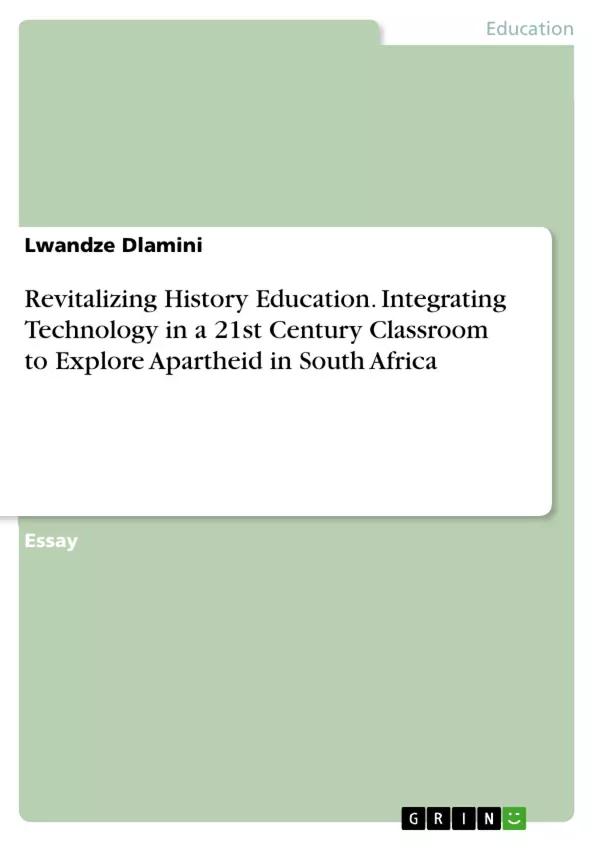This paper explores the effective integration of technology in a 90-minute history lesson focused on understanding the apartheid era in South Africa. In an era dominated by the fourth industrial revolution and heightened reliance on technology, this study aims to demonstrate how technology can be harnessed to enhance the learning experience for EGCSE students. The lesson's objectives include explaining the establishment of the apartheid system, discussing its impacts on South African society, and evaluating its effectiveness. The paper underscores the significance of incorporating technology in history education, especially in the context of the 21st-century classroom and the challenges posed by pandemics. Through a detailed examination of strategies and tools, this essay provides practical insights for history educators seeking to enliven their teaching methods and foster a deeper understanding of historical events among students.
Inhaltsverzeichnis (Table of Contents)
- Introduction
- Technology and its relevance in the 21st century classroom
- Videos and their contributions to learning
- The internet and its role in accessing information
- Computer image projection and its significance
- Audio media and its advantages and limitations
- Social media in education
- Non-projected media such as pictures, graphs and charts
- Conclusion
Zielsetzung und Themenschwerpunkte (Objectives and Key Themes)
This essay explores the use of technology in history education, specifically focusing on how a history teacher can utilize various technological tools to enhance learning in a 90-minute lesson on apartheid in South Africa. The main objective is to demonstrate how technology can contribute to a more engaging and effective learning experience for students.
- The role of technology in the 21st century classroom
- Utilizing technology to enhance understanding of apartheid in South Africa
- Exploring various technological tools for teaching history
- Evaluating the effectiveness of different technological approaches
- Addressing the potential limitations and challenges of technology in the classroom
Zusammenfassung der Kapitel (Chapter Summaries)
- Introduction: This section introduces the topic of using technology in history education and outlines the essay's objectives. It emphasizes the relevance of technology in the 21st century classroom and the need for history teachers to adapt to these changes.
- Technology and its relevance in the 21st century classroom: This section discusses the benefits of using technology in the classroom, particularly for history education. It explores various technological tools such as videos, the internet, computer image projection, audio media, social media, and non-projected media. The section also highlights the potential advantages and limitations of each tool.
Schlüsselwörter (Keywords)
This essay focuses on the use of educational technology in history education, specifically exploring the role of various technological tools such as videos, the internet, computer image projection, audio media, social media, and non-projected media in teaching about apartheid in South Africa. The essay also examines the effectiveness and challenges of integrating these technologies into the classroom.
- Quote paper
- Lwandze Dlamini (Author), 2021, Revitalizing History Education. Integrating Technology in a 21st Century Classroom to Explore Apartheid in South Africa, Munich, GRIN Verlag, https://www.grin.com/document/1436374



